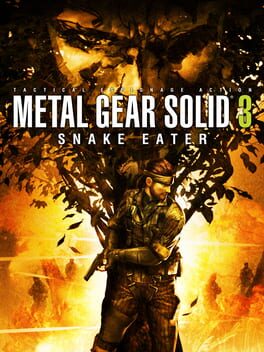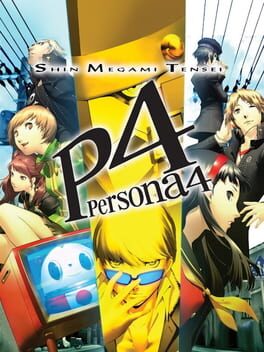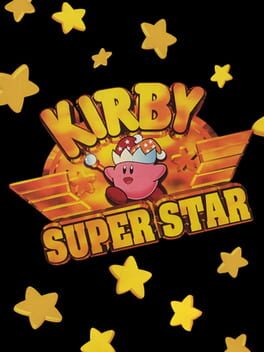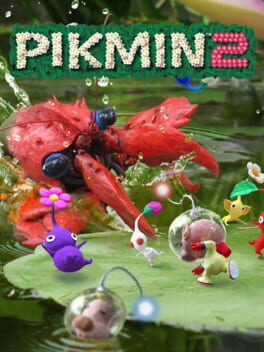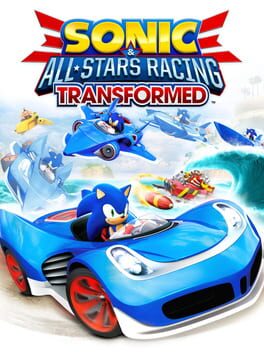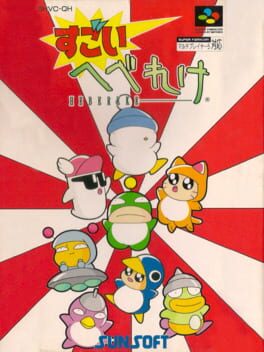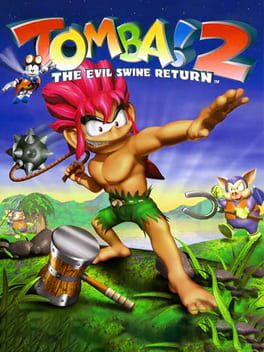pyrrhickong
Bio
Writer, Voiceover, and Director of "Designing For". Plays DK in every game. Witty, but not smart about games.
Writer, Voiceover, and Director of "Designing For". Plays DK in every game. Witty, but not smart about games.
Badges

Loved
Gained 100+ total review likes

On Schedule
Journaled games once a day for a week straight

Well Written
Gained 10+ likes on a single review

Gone Gold
Received 5+ likes on a review while featured on the front page

Popular
Gained 15+ followers

GOTY '23
Participated in the 2023 Game of the Year Event

Liked
Gained 10+ total review likes

Best Friends
Become mutual friends with at least 3 others

Gamer
Played 250+ games

Noticed
Gained 3+ followers

N00b
Played 100+ games

3 Years of Service
Being part of the Backloggd community for 3 years
Favorite Games
352
Total Games Played
021
Played in 2024
000
Games Backloggd
Recently Played See More
Recently Reviewed See More
As a follow-up to Pikmin 1, Pikmin 2 makes an incredibly strong statement. And that statement is "we know that we're spreading ourselves thin between score attack-style survivalist gameplay and slow-burn exploration and worldbuilding, so we've destroyed the worldbuilding and put it in a little book and now the game is all about not dying in caves". It's a change that honestly the Pikmin series probably needed to take in one direction or the other, and the game commits to its more arcade-style gameplay fairly well! Without having to worry about navigating a more complex terrain in favor of labyrinths, control of the Pikmin generally feels a lot more consistent, combat challenges can be placed in a player's way methodically and deliberately, and overall the spikes in difficulty and memorable moments are a lot more controlled than in Pikmin 1. Unfortunately, the very limited exploration offered from seeing Pikmin 1 environments change does end up feeling very rote and obligatory by comparison, which makes a lot of the game's opening stretch seem pretty performatory; Pikmin 2 can't be mean enough in its opening to really grit its teeth due to needing to reteach Pikmin 1's mechanics and introduce its new ones. Additionally, returning bosses like the Burrowing Snagret, Beady Long Legs and Emperor Bulblax are shadows of their former selves due to appearing at the end of dungeons where a player can't be assured to have a full squad like Pikmin 1, creating this really unfortunate deflating feeling after clearing the first game. I'd cleared the debt and was ready to write the game off as a technically superior, but ultimately short-sighted version of Pikmin 1.
Then the Water Wraith happened.
I cannot tell you how wonderful of a turning point the Water Wraith is. Every cave up to that point (discounting backtracking to the first area's harder dungeons) could be handled with just a simple measure of patience, with taking things slowly, step by step, and throwing the right colored Pikmin at the thing they're good at stopping. Water Wraith takes every bit of that away from you, demands you scramble, puts you in the position to make mistakes, has no weaknesses for a majority of its dungeon. This is Pikmin 2 at its best: throwing you into cruel situations where one lapse in attention or assuming that your little guys will be fine will end up with a squad crushed, exploded, or eaten by a jumpscare of a bomb rock or bulbear. Where the first game had you try to figure out how to solve each creature individually, Pikmin 2 is glad to mingle its enemies together, forcing you into incredibly uncomfortable situations to try and keep your most precious fellas alive, cursing the name of the Dirigibug or anything that happens to shoot lightning as they attempt to one-shot your lil' boy army. Bosses take a significant step up, with Man-At-Legs being an especially fantastic upgrade of needing to figure out spacial awareness, positioning, and just how fast your Pikmin can duck into cover to avoid machine gun fire. The midgame of Pikmin 2 is absolutely exhilerating in attempting to expect its cruelty and react.
... and unfortunately the endgame is where Pikmin 2's flaws become most apparent. The caves that you delve into are somewhat randomly generated, with layouts tending to be similar, but a lot of enemy placements and exit placements in those rooms being random. This leads to a lot of scenarios that aren't so much difficult, but unfun, especially if something REAL dangerous like a groink or bulbear spawns directly outside your starting area and leaves you little time to react. I do think the game is significantly more fun not resetting or leaving caves, just trying to do your best with the limited resources you have (I actually managed to beat Submerged Castle on the back of seven total Pikmin remaining, and it was an absolute blast maneuvering that!), but I'll admit it's not the optimal way to play the game compared to resetting. Sitting there watching your 'min get blown over and over again because the blowy man is behind a wall you need to break while a snitchbug takes swipes every so often is hardly a fun time, and these kinds of scenarios are abundant the further you get into Pikmin 2. Add in things like bomb hitboxes extending through walls with no real indication, cutscenes for items interrupting gameplay, and treasures sometimes glitching out if at a bad angle, and Pikmin 2 ends up an experience as unintentionally frustrating as it is intentionally.
Overall, Pikmin 2 is my favored Pikmin game of the Gamecube duology. It's a wildly inconsistent game, but its peaks are utterly fantastic, its writing some of the best on the system even though it's tucked away in its own little section, and the moments it creates as you barely make it through a tough challenge or scenario are legendary. I will never forget sending my army of Pikmin to gank the Empress Bulblax while the President of Hotocate Freight personally punched out an army of her spawn with his bare hands until they could all mob her face and guarantee a win, or slowly tricking Dweevils into getting a stack up disc out of the water because I lost all my Blue Pikmin. It is not the ideal sequel to its original game, and has to sacrifice a lot to make its own fun, but what it does uniquely it does superbly, and there's a stretch of about eight hours of game in here that's utterly incredible. The other surrounding eight hour chunks on either side are still pretty good, too, just with their very obvious drawbacks!
Olimar should not dump his wife for a cool marble, though. That's weird, Olimar.
Then the Water Wraith happened.
I cannot tell you how wonderful of a turning point the Water Wraith is. Every cave up to that point (discounting backtracking to the first area's harder dungeons) could be handled with just a simple measure of patience, with taking things slowly, step by step, and throwing the right colored Pikmin at the thing they're good at stopping. Water Wraith takes every bit of that away from you, demands you scramble, puts you in the position to make mistakes, has no weaknesses for a majority of its dungeon. This is Pikmin 2 at its best: throwing you into cruel situations where one lapse in attention or assuming that your little guys will be fine will end up with a squad crushed, exploded, or eaten by a jumpscare of a bomb rock or bulbear. Where the first game had you try to figure out how to solve each creature individually, Pikmin 2 is glad to mingle its enemies together, forcing you into incredibly uncomfortable situations to try and keep your most precious fellas alive, cursing the name of the Dirigibug or anything that happens to shoot lightning as they attempt to one-shot your lil' boy army. Bosses take a significant step up, with Man-At-Legs being an especially fantastic upgrade of needing to figure out spacial awareness, positioning, and just how fast your Pikmin can duck into cover to avoid machine gun fire. The midgame of Pikmin 2 is absolutely exhilerating in attempting to expect its cruelty and react.
... and unfortunately the endgame is where Pikmin 2's flaws become most apparent. The caves that you delve into are somewhat randomly generated, with layouts tending to be similar, but a lot of enemy placements and exit placements in those rooms being random. This leads to a lot of scenarios that aren't so much difficult, but unfun, especially if something REAL dangerous like a groink or bulbear spawns directly outside your starting area and leaves you little time to react. I do think the game is significantly more fun not resetting or leaving caves, just trying to do your best with the limited resources you have (I actually managed to beat Submerged Castle on the back of seven total Pikmin remaining, and it was an absolute blast maneuvering that!), but I'll admit it's not the optimal way to play the game compared to resetting. Sitting there watching your 'min get blown over and over again because the blowy man is behind a wall you need to break while a snitchbug takes swipes every so often is hardly a fun time, and these kinds of scenarios are abundant the further you get into Pikmin 2. Add in things like bomb hitboxes extending through walls with no real indication, cutscenes for items interrupting gameplay, and treasures sometimes glitching out if at a bad angle, and Pikmin 2 ends up an experience as unintentionally frustrating as it is intentionally.
Overall, Pikmin 2 is my favored Pikmin game of the Gamecube duology. It's a wildly inconsistent game, but its peaks are utterly fantastic, its writing some of the best on the system even though it's tucked away in its own little section, and the moments it creates as you barely make it through a tough challenge or scenario are legendary. I will never forget sending my army of Pikmin to gank the Empress Bulblax while the President of Hotocate Freight personally punched out an army of her spawn with his bare hands until they could all mob her face and guarantee a win, or slowly tricking Dweevils into getting a stack up disc out of the water because I lost all my Blue Pikmin. It is not the ideal sequel to its original game, and has to sacrifice a lot to make its own fun, but what it does uniquely it does superbly, and there's a stretch of about eight hours of game in here that's utterly incredible. The other surrounding eight hour chunks on either side are still pretty good, too, just with their very obvious drawbacks!
Olimar should not dump his wife for a cool marble, though. That's weird, Olimar.
I feel like there are two, sometimes not mutually exclusive experiences with this game: either this was your primary focus for the Pokemon TCG back in the day because the collection aspect dominated the competitive and the combination of the music and incredibly clever spritework to bring these illustrations to the Game Boy Color won your heart forever, or you recoil in agony every time you hear the coin flip sound effect in this game.
This game exists in an incredibly weird space where it wants to show you everything that the initial three sets of the TCG had to show off, but almost entirely ignores the meta to do so. Sure, there's one Rain Dance trainer and Ronald's mid-game deck vaguely resembles Haymaker, but there's a lot of very neat experimentation trying to show off the various playstyles and most of 'em aren't running four Oak four energy removals. Sure, lightning is a bit neutered as the TCG version of Electrode was too complicated to implement in the game, but the game's slow rollout of cards essentially forces you to play a version of the Pokemon TCG that never existed, the intentions of the card game made playable rather than what the meta eventually developed into. And if you avoid fiending for a Hitmonchan Turbo deck or whatever, that's pretty cool! I ended up going through this playthrough with a quick swap strategy themed around Butterfree, keeping a core of Scythers and Grimers to build up my little Caterpies, then having a zero-retreat monster who heals for 20 every turn and can whirlwind away bad match-ups while Muk camps on the bench, with some Tauros and Wigglytuff tossed in as catch-alls and Koffing to inflict status on walls. It was a fun little grab bag that swung between big damage and stall, would have crumbled immediately if the game threw more than a few Electabuzz at me, but was fun to let play out in a much slower-paced metagame!
The game does have the drawbacks of being on the Game Boy. It's rather slow, the enemy AI isn't sophisticated and can pretty easily be caught into patterns (they rarely think about the big picture of bench composition compared to finding the fastest way to kill whatever's in front of them now), and sometimes Chansey will succeed at Scrunch eight times in a row and kill five minutes. The onboarding process is... about as good as they could do for the time with a tutorial that explains the game well enough, but actual deck construction tips, like suggested energy/pokemon balance, come WAY after they should be useful. The game remains a fascinating relic of the TCG in a state where it never really existed, and is far more competent at celebrating its strengths than contemporaries like Yu-Gi-Oh Dark Duel Stories or even later GBA Yugiohs were doing for years. It's mostly a cute game that's just kinda fun at doin' what it wants. Nothin' wrong with that!
This game exists in an incredibly weird space where it wants to show you everything that the initial three sets of the TCG had to show off, but almost entirely ignores the meta to do so. Sure, there's one Rain Dance trainer and Ronald's mid-game deck vaguely resembles Haymaker, but there's a lot of very neat experimentation trying to show off the various playstyles and most of 'em aren't running four Oak four energy removals. Sure, lightning is a bit neutered as the TCG version of Electrode was too complicated to implement in the game, but the game's slow rollout of cards essentially forces you to play a version of the Pokemon TCG that never existed, the intentions of the card game made playable rather than what the meta eventually developed into. And if you avoid fiending for a Hitmonchan Turbo deck or whatever, that's pretty cool! I ended up going through this playthrough with a quick swap strategy themed around Butterfree, keeping a core of Scythers and Grimers to build up my little Caterpies, then having a zero-retreat monster who heals for 20 every turn and can whirlwind away bad match-ups while Muk camps on the bench, with some Tauros and Wigglytuff tossed in as catch-alls and Koffing to inflict status on walls. It was a fun little grab bag that swung between big damage and stall, would have crumbled immediately if the game threw more than a few Electabuzz at me, but was fun to let play out in a much slower-paced metagame!
The game does have the drawbacks of being on the Game Boy. It's rather slow, the enemy AI isn't sophisticated and can pretty easily be caught into patterns (they rarely think about the big picture of bench composition compared to finding the fastest way to kill whatever's in front of them now), and sometimes Chansey will succeed at Scrunch eight times in a row and kill five minutes. The onboarding process is... about as good as they could do for the time with a tutorial that explains the game well enough, but actual deck construction tips, like suggested energy/pokemon balance, come WAY after they should be useful. The game remains a fascinating relic of the TCG in a state where it never really existed, and is far more competent at celebrating its strengths than contemporaries like Yu-Gi-Oh Dark Duel Stories or even later GBA Yugiohs were doing for years. It's mostly a cute game that's just kinda fun at doin' what it wants. Nothin' wrong with that!
What a cute little title to drop! Sugoi Hebereke is a fascinating little game, a fully functional four-player multitap marvel for the SNES to allow arena-style combat that wouldn't be fully capitalized on even in later eras! Its top-down action stylings set it apart from other fighters of its era, being entirely positionally-based, relying on drops from power-ups from the sky and cute, imaginative arenas in order to turn the tide of battle. This is one of the most innovative little party brawlers made in its era (that I know of), and certainly deserves its flowers for that.
Anyway I beat it by walking up to every opponent and spamming grab, which deals a ton of damage, and then repeated that like 20 times. Hebereke does not stray far from the fighting game formula by including traditional health bars as the means of elimination, and it provides a ton of hitstun on most of its moves and usually pretty simplistic inputs for very linear strategies. It lacks the thrill of a ring-out kind of mechanic, the power-ups aren't quite as useful as just punching another dude repeatedly, and I managed to roll credits with merely the knowledge of how to do a penguin boy flash kick and mashing. I'm sure that there could be more depth to it, but ultimately, this is a game that I respect the gumption of significantly more than I enjoy playing it. I don't think it's bad at all, just uninspired mechanically past its initial innovation, which is clearly taking all of its horsepower!
Anyway I beat it by walking up to every opponent and spamming grab, which deals a ton of damage, and then repeated that like 20 times. Hebereke does not stray far from the fighting game formula by including traditional health bars as the means of elimination, and it provides a ton of hitstun on most of its moves and usually pretty simplistic inputs for very linear strategies. It lacks the thrill of a ring-out kind of mechanic, the power-ups aren't quite as useful as just punching another dude repeatedly, and I managed to roll credits with merely the knowledge of how to do a penguin boy flash kick and mashing. I'm sure that there could be more depth to it, but ultimately, this is a game that I respect the gumption of significantly more than I enjoy playing it. I don't think it's bad at all, just uninspired mechanically past its initial innovation, which is clearly taking all of its horsepower!
